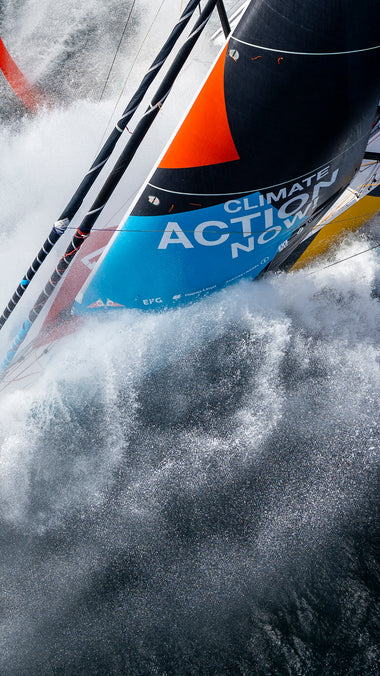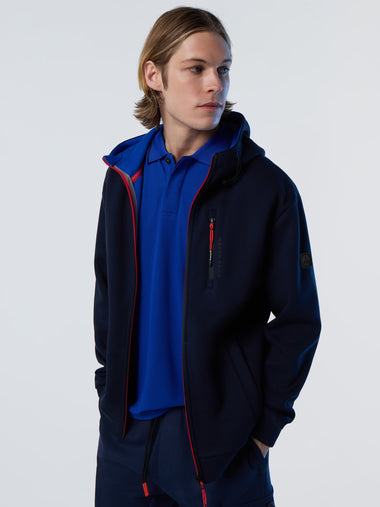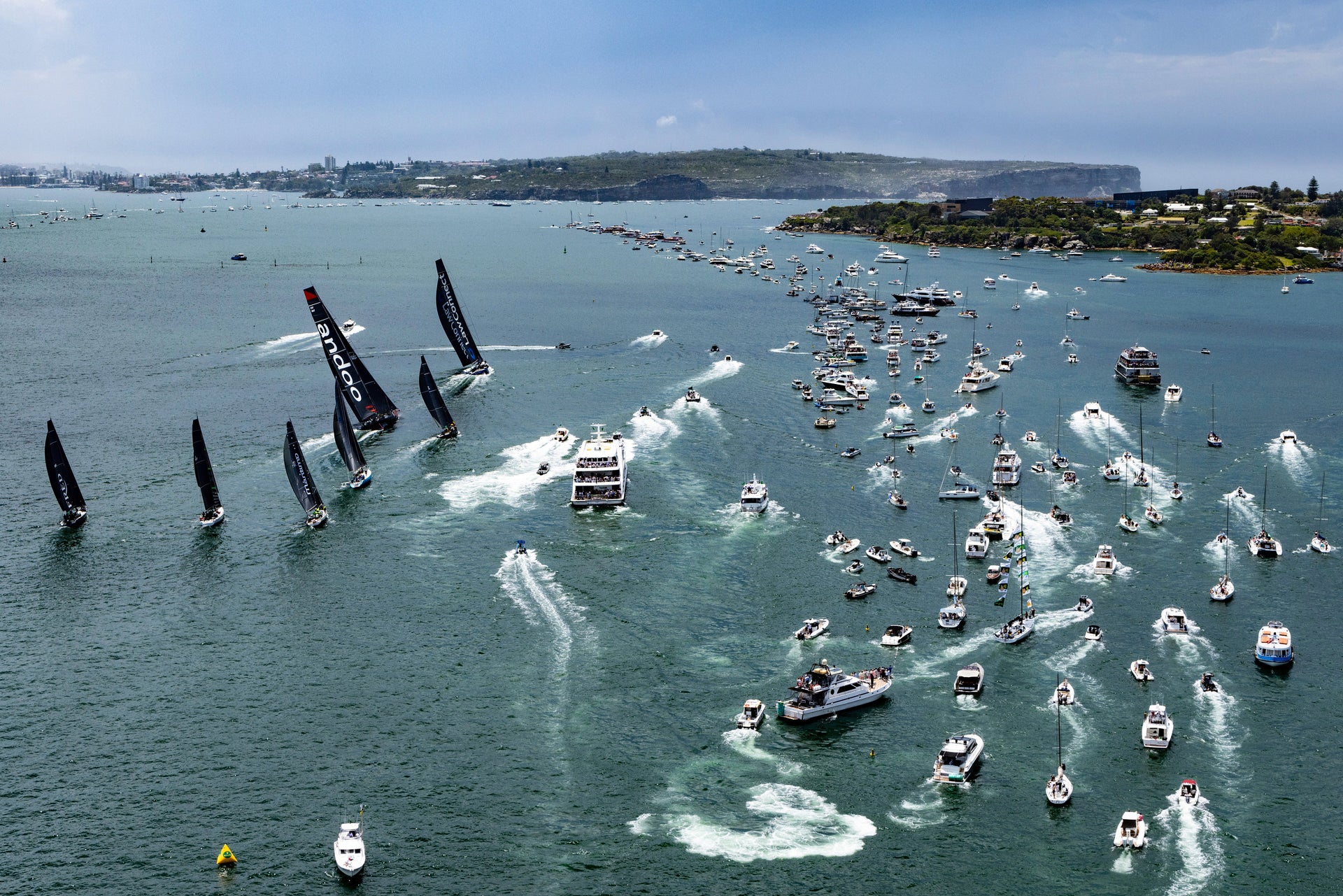HAMILTON ISLAND RACE WEEK: RACING YOUR CRUISER
Preparing Your Yacht & Choosing The Right Set-Up

© Ian Roman
HIRW is shaping up to be the main event with a total of 163 yachts registered in the Hamilton Island-class! Divided into six classes: IRC Class, Hamilton Island Class, Multihull Hamilton Island, Non-Spinnaker, Trailerable, and Multihull Racing, it looks to be a fun and competitive regatta for sailors of all kinds. Airlie Beach Race Week, the week prior, has 50+ entries in Cruising Spinnaker & Performance Handicap racing which will make for a great warm-up event. Racing Performance Handicap regattas take a little stealth sometimes. Handicaps are set by the handicapper to the best of their knowledge of the boat's design and recent results from a wide range of sources & places, which is not an enviable task. Some yachts are handicap bandits and some crews just know how to play the game. With 'keeper' scores without raising the attention of the Handicapper! Our North Sails experts have sailed in these mixed fleets at many regattas across Australia with varied results. Sometimes luck is on your side, and sometimes the handicapper is not. Either way, It’s all great fun and something our team looks forward to each year. With many variables in sailing outside of our control, it is important to make sure your yacht is cleaned, light, and ready to be used with ease once your sails and crew are added. Please refer to our starting points which are VIP to make sure we are as ready as we can be to take on the fleet, wind, and tides (not to mention, the handicapper!).
Starter Tips
-
Clean the bottom. Pretty simple this one... but an easy one to forget if having the “bottom done” is usually more of an annual event. A smooth bottom reduces the water friction around the hull and foils. If you don't do anything else to prepare your boat then make sure you do this.
-
Remove Excess Weight. We love our floating home away from home with all its comforts…BUT the safety of a big anchor chain but getting the weight out of the boat, especially the ends will make the yacht more lively to sail. Removing weight will also help to reduce pitching when sailing upwind. Pitching is bad for the flow of air across the sails. Reducing weight where you can have a positive effect across the entire wind range. Start with the Anchor & Chain, empty the water tanks, take off cruising or delivery sails. Just have a good think of what you can do without while racing. *note: beer is not included on this list!
-
Rig Tune. The rigs in most cruising boats are tensioned up very tight, this can make it hard to adjust the shape of the sails for the conditions of the day. Before you leave your home club ask your rigger or sailmaker to have a look at the rig to ensure it is straight side to side and how the mainsail sits on the mast in both light and windy conditions. Ideally, the mast can be adjusted to allow the sail shape to be altered with the sail and rig controls as required on the day. Some small adjustments to mast trim and mainsail luff curve can make massive improvements to your performance and make the sails easier to trim. It is important to have your rig easily adjustable.
-
Adjustable Backstay. Not all yachts come standard with an adjustable backstay, but if you have one or can upgrade to one, you will benefit from proper adjustment. The ability to tighten or loosen the backstay has a positive effect on the jib/genoa & mainsail at the same time. Tighter to de-power for a flatter main and jib when the wind is up, and Looser when we want power in the rig, a straighter mast and sagged forestay will power up the sails. Have your sailmaker make up an easy calibration stick or marks for repeatability.
-
Code-Zero & Gennaker. A good VMG running sail and a code-zero for the “round the island” style racing is a must-have item to be competitive. Being “non-rating” racing allows the use of an un-restricted mid-girth gennaker, more like a big genoa which is a very efficient sail that has a wide wind range. From light airs upwind to medium air reaching the Code zero is best set on a furler tacked as far in front of the forestay as you can get ie; Bowsprit or strong point on the anchor roller. A running-oriented G2 gennaker is your other downwind sail. A well-designed G2 gennaker can have you sailing close to as low as a symmetrical spinnaker without the hassle of a pole, Some boats don’t quite have all the winches needed to handle the sheets & Braces for a pole anyway, so the running gennaker is a perfect fit. For a bigger boat, you might also consider having a snuffer fitted to the sail to make the hoist and drop safer and easier, you can also snuff & gybe if you are not confident to gybe when the breeze is up.
-
Jib In-hauler and Traveller. Sheeting angle and traveler position are 2 great ways to improve the boats' pointing ability, Jib tracks are placed pretty wide on many modern production boats to improve the cabin space downstairs, the downside of this is a wide sheeting angle for the jib, this directly affects the pointing ability or the “angle of attack” of the sail. An easy way to improve the sheeting angle is to have an “in-Hauler” or Barber haul system for the jib sheet. This can help narrow down the sheeting angle to a more race like 7-8 degrees from centerline. Work with your sailmaker to ensure your jib has the correct clew height to suit. Another good trick that may apply if your boat does not have a traveler, is to have a handy billy purchase system that you can clip onto the boom end and the other end to the weather gunnel to bring the boom up to centerline or even slightly across without pulling the mainsheet to hard… especially handy in the lighter air to create some heel angle and rudder feel.
-
Downwind sail Cross-Over Chart. Know when the code zero is faster than the jib or what true wind angles you can carry the A2 is also an easy way to save trial and error racing. Ask us to help you create a simple X-Y chart that shows True Wind Speed and True Wind Angle across the top and side of the page, then its as simple as matching TWA & TWS for the sail you need!

Your North Team will be out there too, racing and for your support. We want you and your yacht to be ship-shape for racing. If you need anything, we are here to help. Don't hesitate to
contact your local team to stay ahead of the game!
 © Ian Roman
© Ian Roman Your North Team will be out there too, racing and for your support. We want you and your yacht to be ship-shape for racing. If you need anything, we are here to help. Don't hesitate to contact your local team to stay ahead of the game!
Your North Team will be out there too, racing and for your support. We want you and your yacht to be ship-shape for racing. If you need anything, we are here to help. Don't hesitate to contact your local team to stay ahead of the game!


























